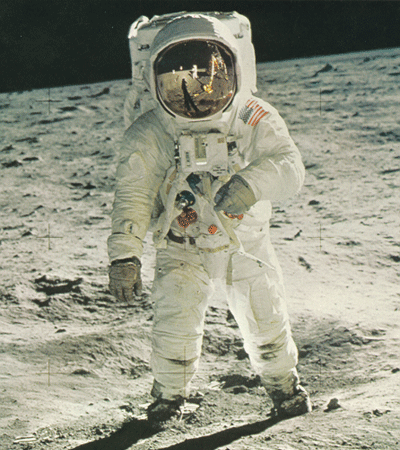The third week of July 1969 remains one of the most significant in the history of the United States, with implications that continue to resonate decades later. It was then that a band of indefatigable young men, working for a government agency in deepest secrecy, without a reference manual and under strict orders from the President, took a bold step. A giant leap, if you will. The group’s work culminated in the passing of an iconic image of the United States into popular culture, an image today recognized around the world and forever identified with our nation’s dominance.
Conspiracy theories abounded at the time, as they continue to today. The belief goes that whatever the public was told was fiction, and that the truth lies hidden, with only the Illuminati privy to the details.
We’re talking, of course, about the daring and audacious decision to make the $100 bill the largest in circulation, by discontinuing the $500, $1,000, $5,000, and $10,000 bills. At the time, it was the biggest news story in the country. Understandably, it got pushed to the back page a few days later.
Is it practical that no bill larger than a Benjamin exists today? That you can’t pay cash for a $95 blender (including sales tax) without suffering the inconvenience of having to use two bills? Granted, the sarcasm runs deep and hard in that question, but having a small largest bill does make big transactions cumbersome. A bill is .0043” thick, so buying a $30,000 car with $100s instead of $500s means carrying a stack 2.58” thick in your wallet (assuming you fold the bills over), rather than .52”.
When the Treasury removed the $500+ bills from circulation, the Consumer Price Index was 36.8. (August 1983 is the baseline.) Today the CPI is 226.955, indicating not just inflation but a modern propensity to measure quantities to far too many decimal places. Bottom line, $100 then is worth $617 today.
Our parents (wait, that’s now two full generations. Our grandparents) could pay for what is today a $3,085 item with a single bill. Or a $61,700 item, for that matter. Think about that. They actually minted a bill large enough to have bought the equivalent of a median priced condo in 2011 Las Vegas (the nation’s most battered housing market) and still include a 17% tip for the realtor.
Or you can look at it from the other angle. Imagine going up to Abbie Hoffman at Woodstock and telling him that 43 years in the future, the largest available bill will be the equivalent of a $16 bill today. He’d call you crazy, then tell you to get off that whole poisonous commerce trip, man.
The argument for retiring the large bills, a part of which might even be legitimate, is that credit cards made $500+ bills unnecessary. Never mind that there’s been a €500 note since the euro was invented 9 years ago, or that Canadian $1000 bills exist.* The Treasury cites money laundering, drug sales and tax evasion as its reasons for keeping $500+ bills far away from your and my grubby hands. If you’re ever at the Port of Miami, look for the guys wearing painter’s coveralls on 88º days. Those are your coke mules, who’d be looking less conspicuous in Cuban skinny jeans if only our Treasury produced larger bills.
So there’s a perceived positive correlation between two quantities – denomination size and drug availability. But no one perceives the correlation to be so positive that we could reduce drug use even more by eliminating the $50s and the $100s. Presumably, the United States is at an acceptable level of cocaine consumption under the current system.
The Treasury Department puts it authoritatively, as they do most of their pronouncements, leaving nothing open to question:
The purpose of the United States currency system is to serve the needs of the public and (today’s existing) denominations meet that goal. Neither the Department of the Treasury nor the Federal Reserve System has any plans to change the denominations in use today.
Among other things, that means Bill Simmons will have to wait a little longer to use a $24 bill with Danny Biasone’s face on it. No one seems to crave large denominations that badly, perhaps for fear of being suspected a drug dealer. Or maybe the cost of adding another compartment to every cash drawer in the nation would drag the economy to a halt.
It’s Standard Blog Operating Procedure to end each post with a question. We avoid that at Control Your Cash, but to do so this time seems organic. So, have you ever thought transactions would be more convenient if you could pay with (and receive) $500 bills? Or are we just crazy?
*Actually, it turns out they yanked them in 2000. Same rationale as the one for getting rid of the U.S.’s big denominations.
This article is featured in:




